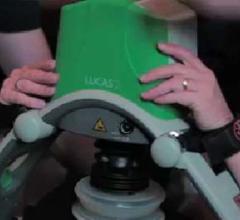May 21, 2013 — Zoll Medical Corp. has received Shonin approval from the Japanese Ministry of Health, Labour and Welfare (MHLW) to enter the Japanese market with its Intravascular Temperature Management (IVTM) technology — the first intravascular temperature management system to receive Shonin approval in Japan.
Zoll’s IVTM solution will be marketed and sold by Asahi Kasei Zoll Medical (AZM), a Zoll company established in August 2012 to pursue the regulatory approval, sale, and marketing of Zoll products in Japan.
Zoll’s IVTM technology was approved in Japan for fever control in neurologically injured patients. The intravascular system offers superior temperature control when compared to other cooling methods. Fever is commonly found in both neurologically injured and neurosurgical patients and is associated with poor outcomes.[1] Specifically, moderate fever has been reported to almost double patient mortality, while extremely high fever can triple mortality.[2] Management of the body’s core temperature is key to proper neurological function, especially for patients in neurointensive care.
Zoll’s IVTM system provides cooling and warming through a balloon catheter inserted into the venous system. This provides better control of the core body temperature over surface methods by directly cooling or warming the patient’s blood as it flows through the body. This catheter is connected to the Thermogard XP console, which circulates cold saline solution inside the catheter. Since the saline flows only within the catheter, no fluid is infused into the patient. Zoll offers a variety of triple-lumen catheters with placement options to handle specific patient challenges. The Zoll IVTM system is efficient, precise and easy to use, and frees up clinical staff to attend to other patient needs.
“We are now preparing for a clinical trial for therapeutic hypothermia following cardiopulmonary resuscitation, a treatment having a Class 1 recommendation [3] from both the American Heart Association (AHA) and the Japan Resuscitation Council (JRC),” said James Palazzolo, president of Zoll, Sunnyvale, Calif., operations.
For more information: www.zoll.com
References:
1. Diringer MN, et al. Crit Care Med (2004) 32, 2:559–564.
2. Diringer MN, et al. Crit Care Med (2004) 32, 7:1489–1495.
3. 2010 AHA Guidelines for Cardiopulmonary Resuscitation and Emergency Cardiovascular Care and JRC 2010 Guidelines. Class I: Procedure/treatment should be performed/administered, Class IIa: It is reasonable to perform procedure/administer treatment, Class IIb: Procedure/treatment may be considered, Class III: Procedure/treatment should not be performed/administered since it is not helpful and may be harmful.

 April 02, 2019
April 02, 2019 


